Beating the gridlock on the ground
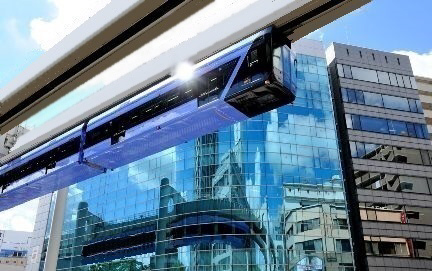
Adding elevated transit systems
We propose funding the addition of a layer of elevated mass transit to service new apartment complexes. These would link the new housing to existing heavy rail hubs and the CBD.
This new network would be entirely independent of existing transit systems and occupy minimal space at ground level.
(*Excluding Conservative Electorates – see One Country, Two Systems)
Overseas systems
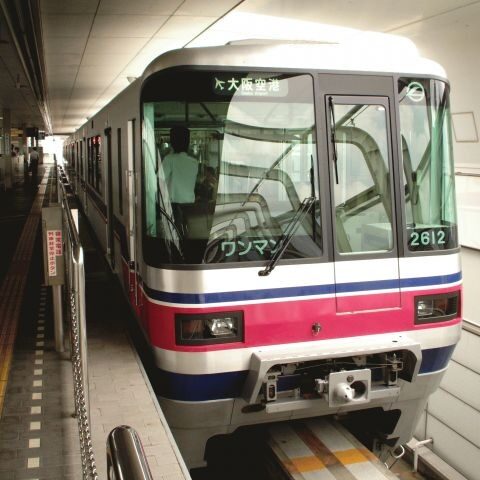
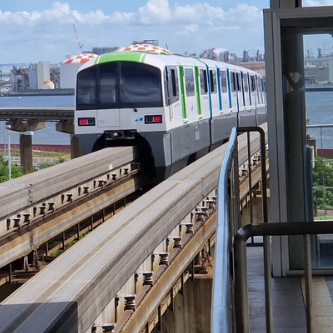
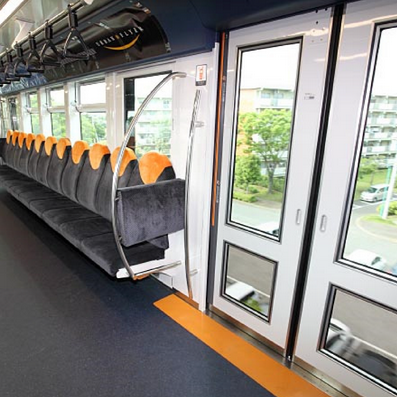
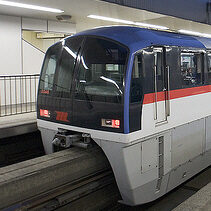
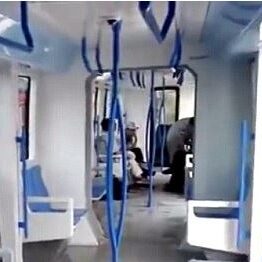
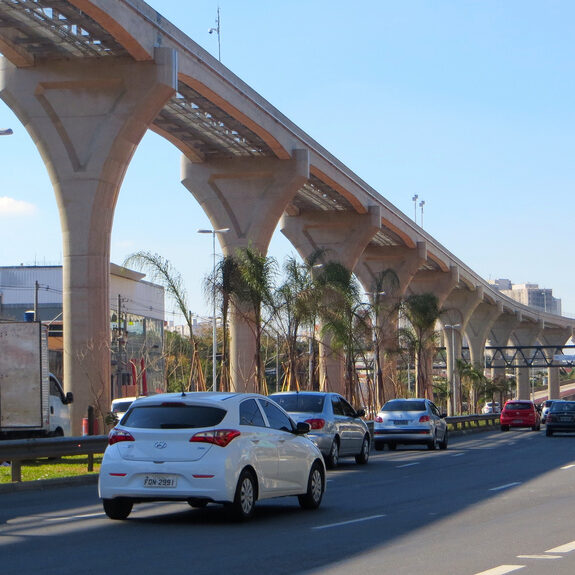
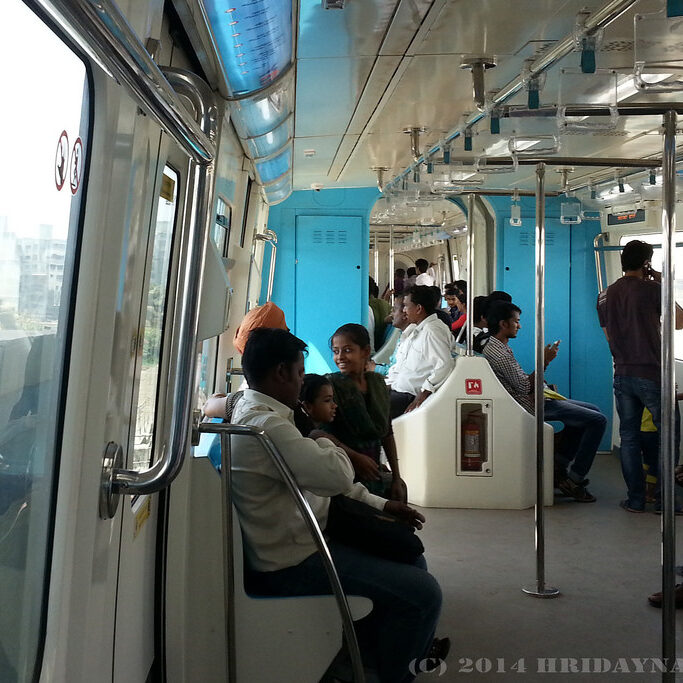
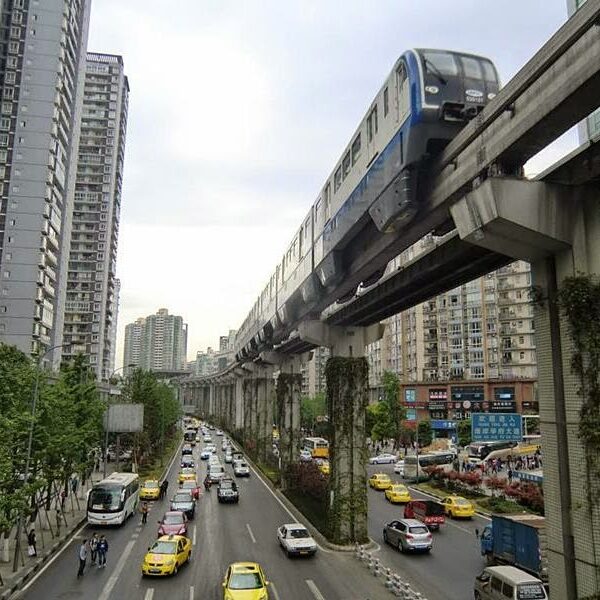
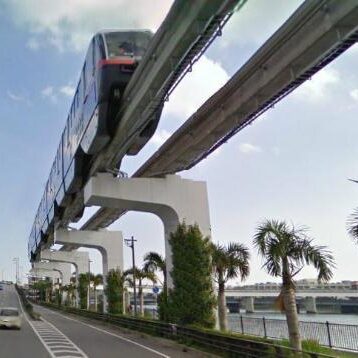
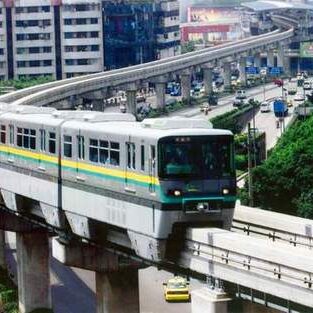
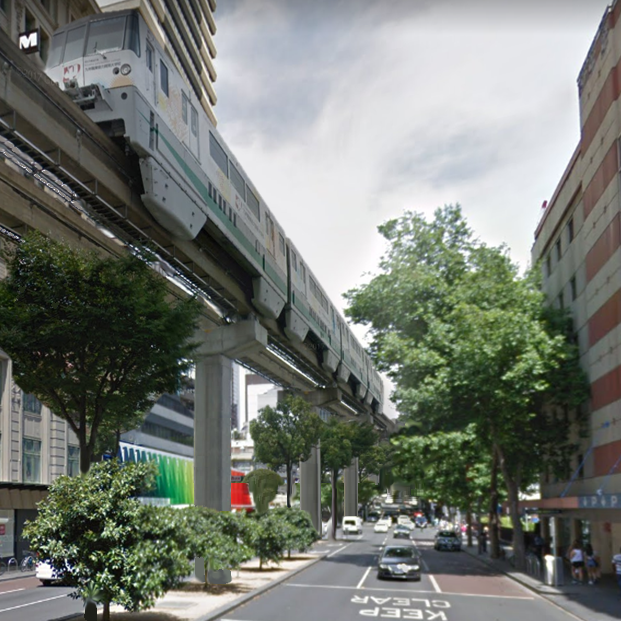
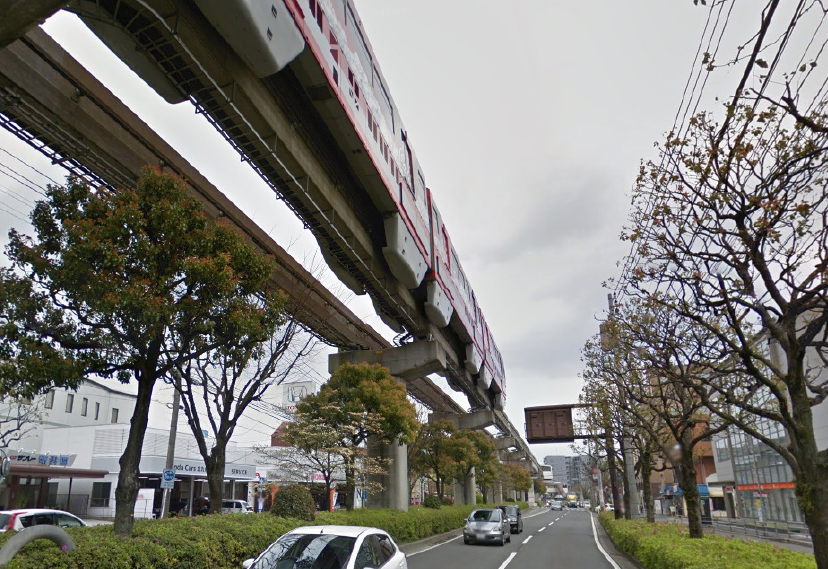
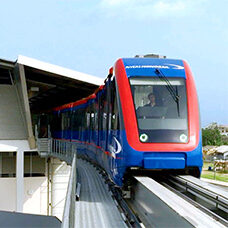
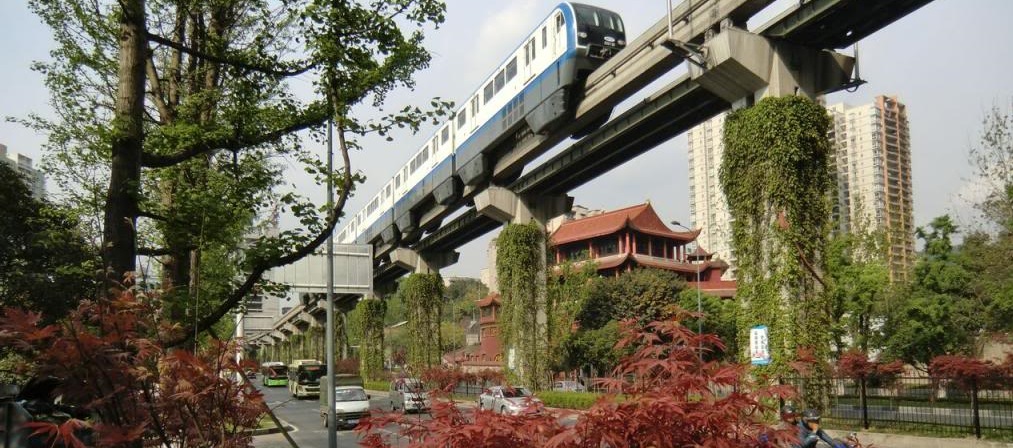
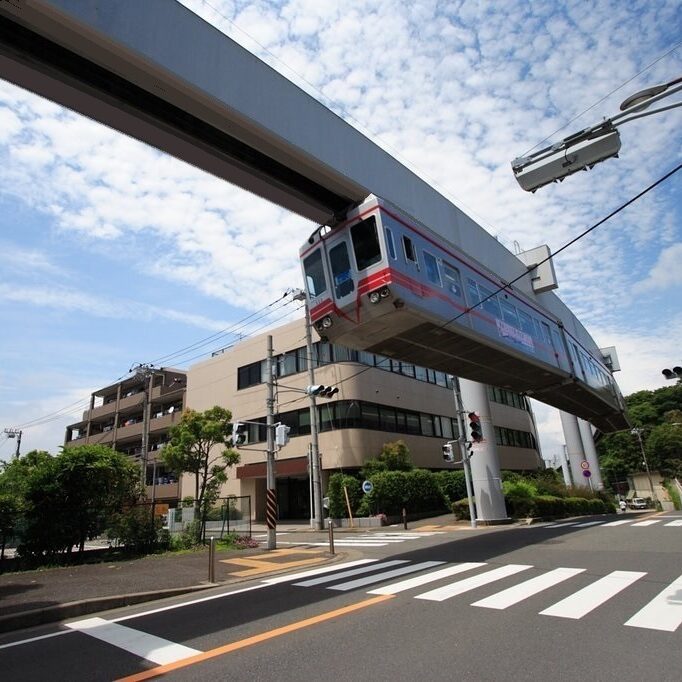
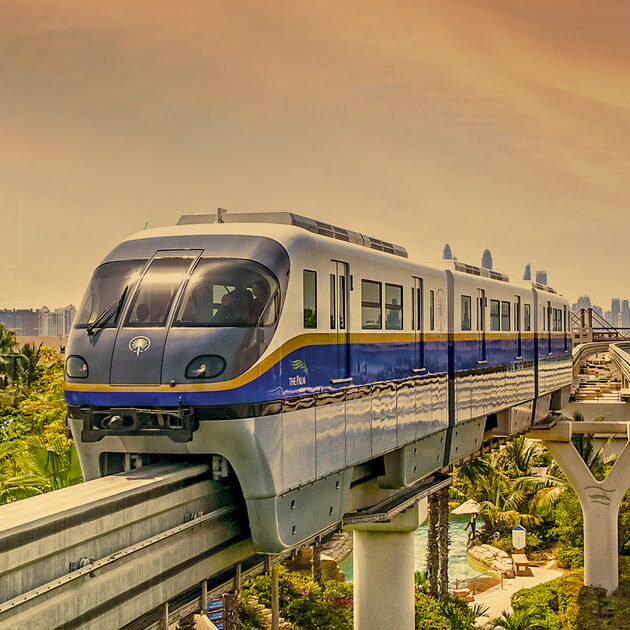
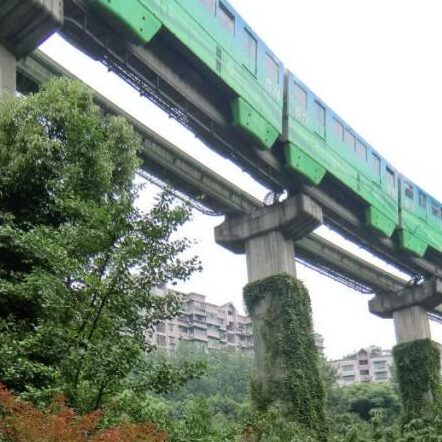
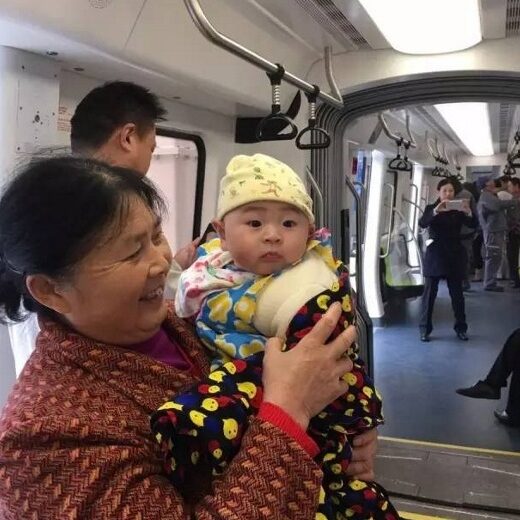
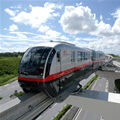
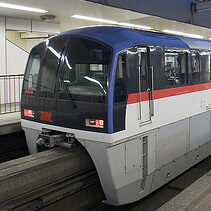
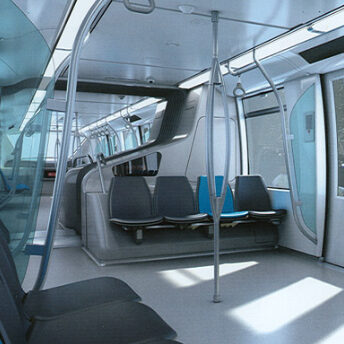
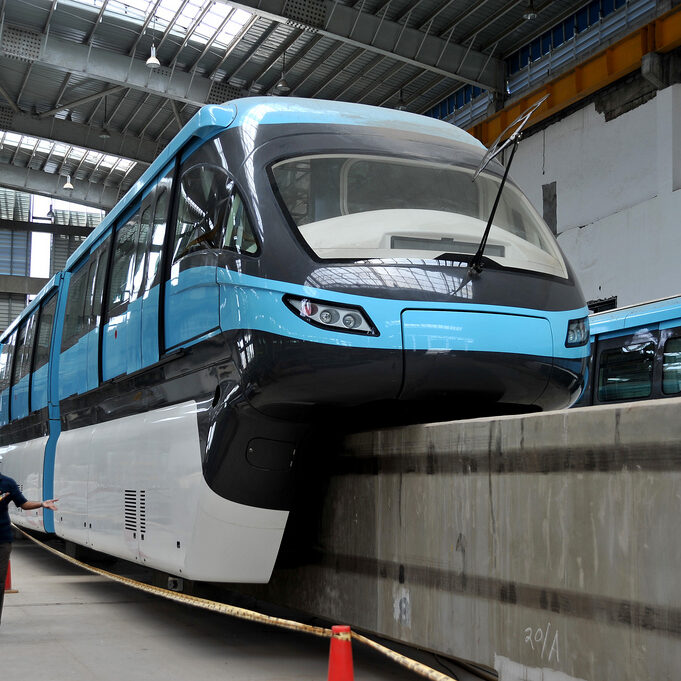
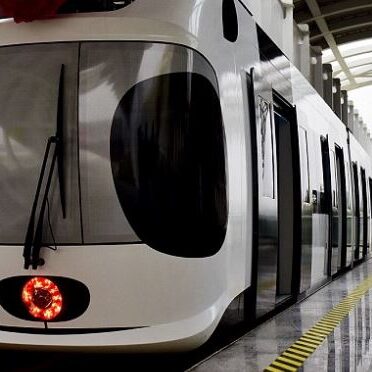
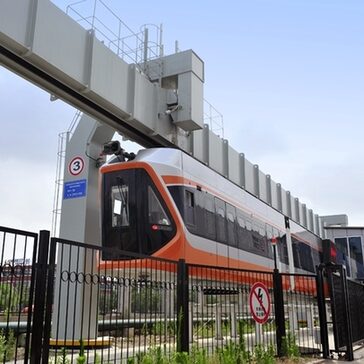
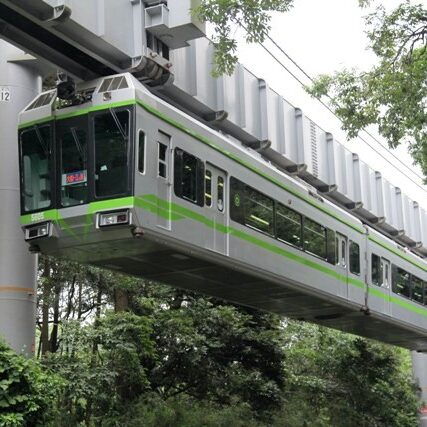
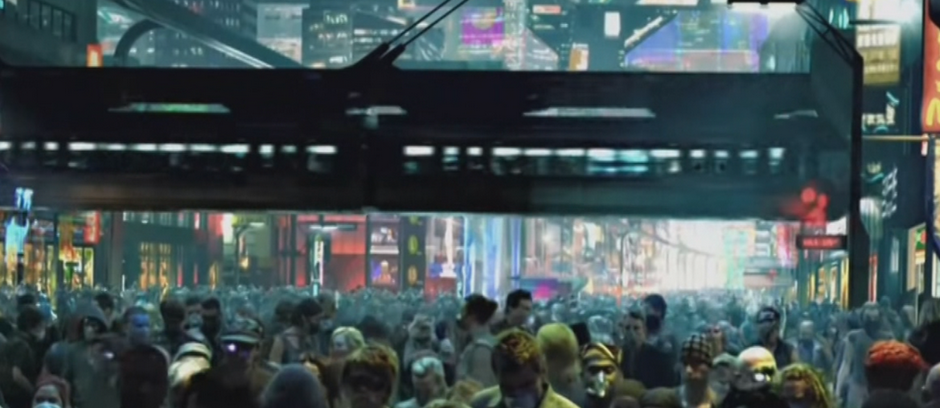
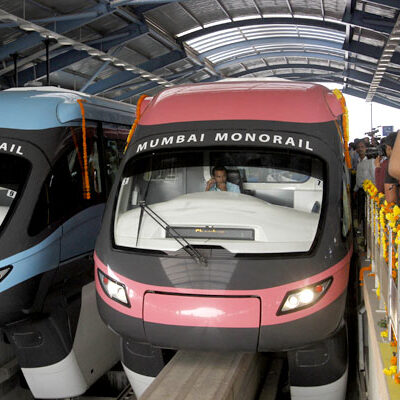
Straddle beam or suspended?
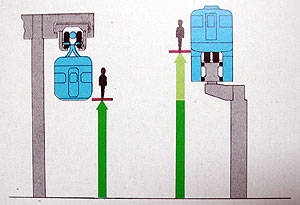
Most existing systems are straddle beam which works better if retrofitting over roads which have a median strip.
Suspended monorails are more flexible as they can have supports on either side of a road if there is no median strip.
In either case the monorail vehicle cannot be separated from the guideway.
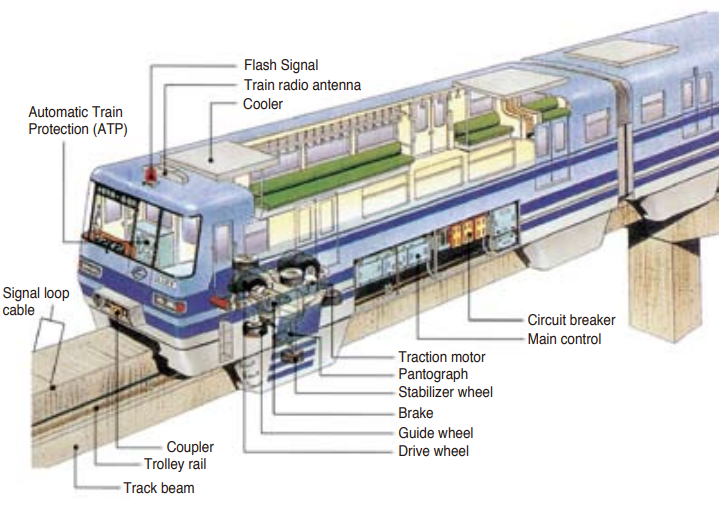
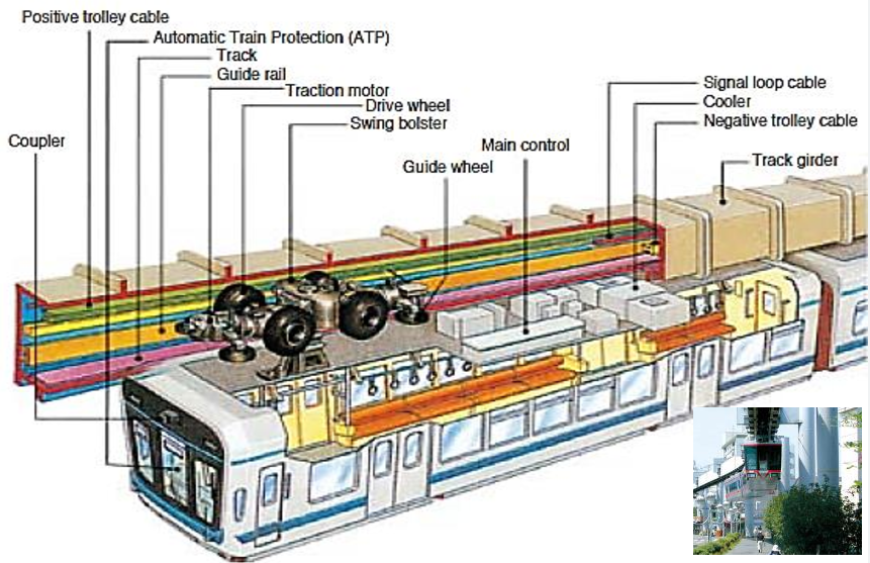
Monorail vs. train capacity
In general monorail passenger capacity is between trams and heavy rail trains. However, monorails can move as fast as trains and cost about 5% of the cost of a metro.
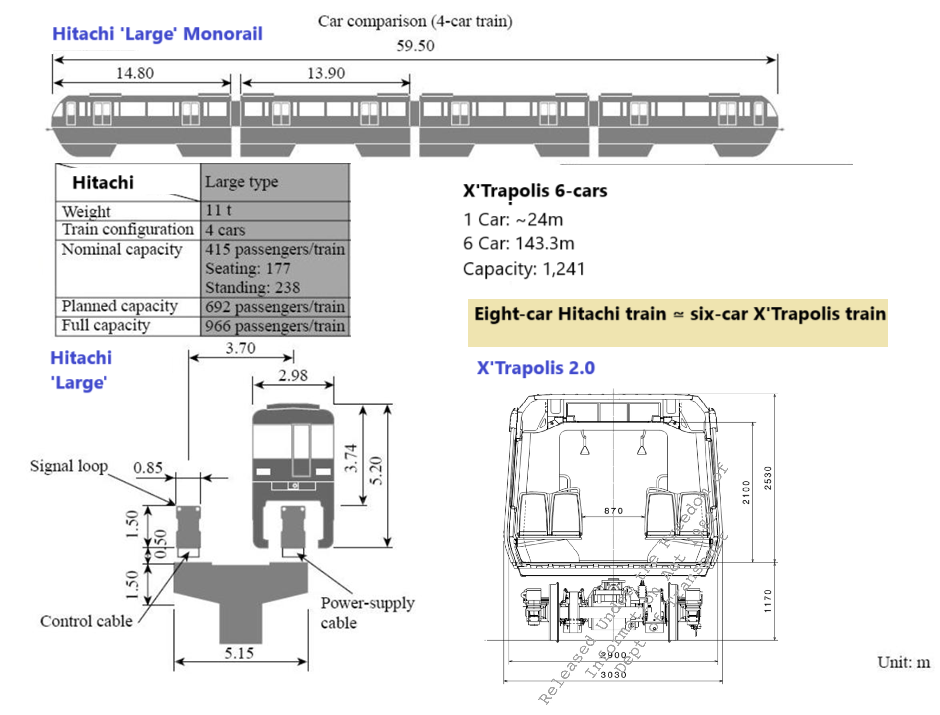
Robust Track Switches
All monorail systems use track switches continuously.
| Suspended monorail track switch | Straddle beam track switch |
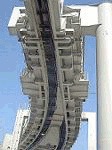 | 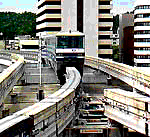 |
Key features
Australian transit monorails should have these features:
- Flat walk-through floor allowing movement between carriages
- Possibility of six or more carriages
- Sufficient battery back-up to move the train to the next station if mains power is lost
- The usual fail-safe door locking used for any train
- Driverless operation
- Train security & first aid staff should be in the carriages
- Climate control for to cope with zero to fifty degrees celsius outside
- Platform screen doors
- Wrap-around stations to protect passengers from wind, driving rain and high heat.
Recent Hitachi Monorail Costs & Ridership
The longer the track the lower the cost as fixed costs such as maintenance facilities, control rooms and track production factories are spread over more kilometres.
| System | Cost (US$M) | Km | Built | Cost / km (US$M) | Daily Rides | Max Speed |
|---|---|---|---|---|---|---|
| Daegu Line 3 | 333 | 24 | 2015 | 14 | 74,000(2018) | 100 km/h |
| Okinawa | 460 | 17 | 2003 | 27 | 50,000 (2017) | 65 km/h |
| Osaka | 846 | 9 | 2018 | 94 | 121,000 (2022) | 75 km/h |
| Panama* | 2,600 | 24.5 | 2025 | 106 | N/A | N/A |
(* Part of this line is to be 60 meters UNDER the Panama Canal adding significant costs.)
Cosmetics
Like Melbourne’s new skyrail, elevated transit can look as good as the government wants.
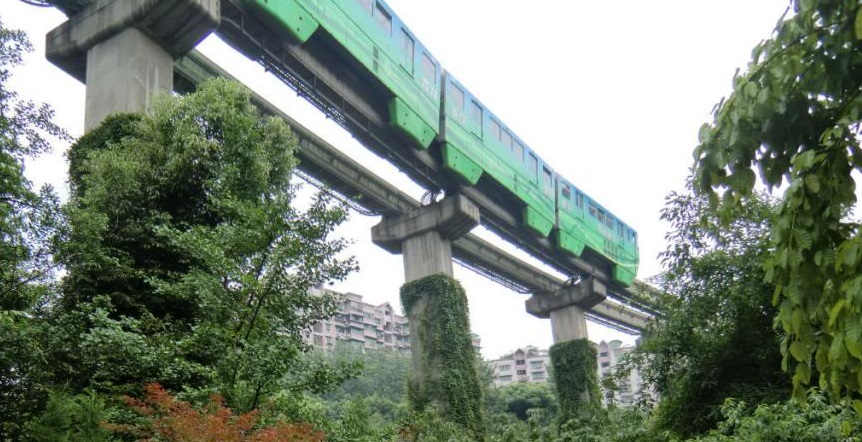
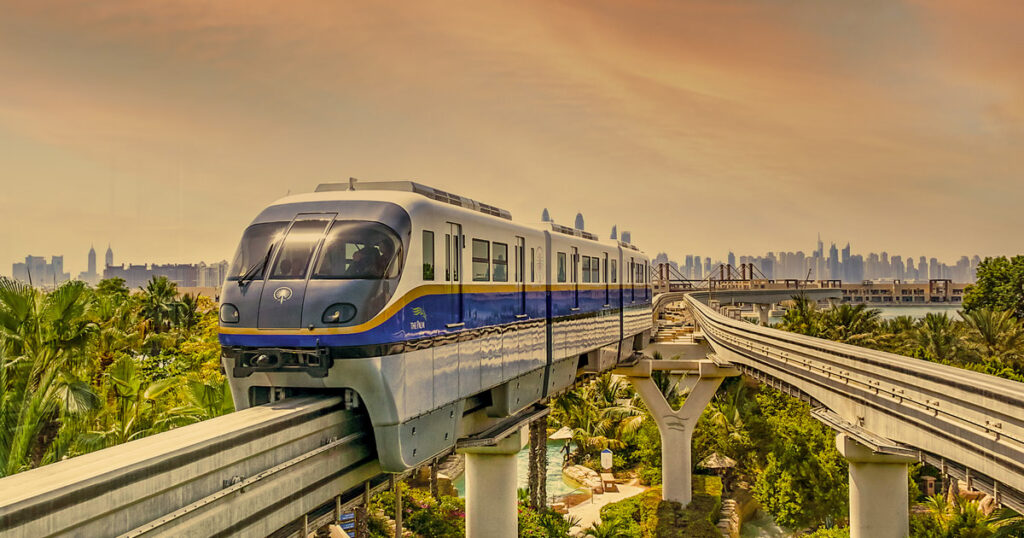
Note the Y-shaped pillars and arched guideway.
Kitakyushu monorail, Japan
The appearance of suspended monorails could be improved by fully covering the ribs on the guideway. (Shonan Monorail, Tokyo)
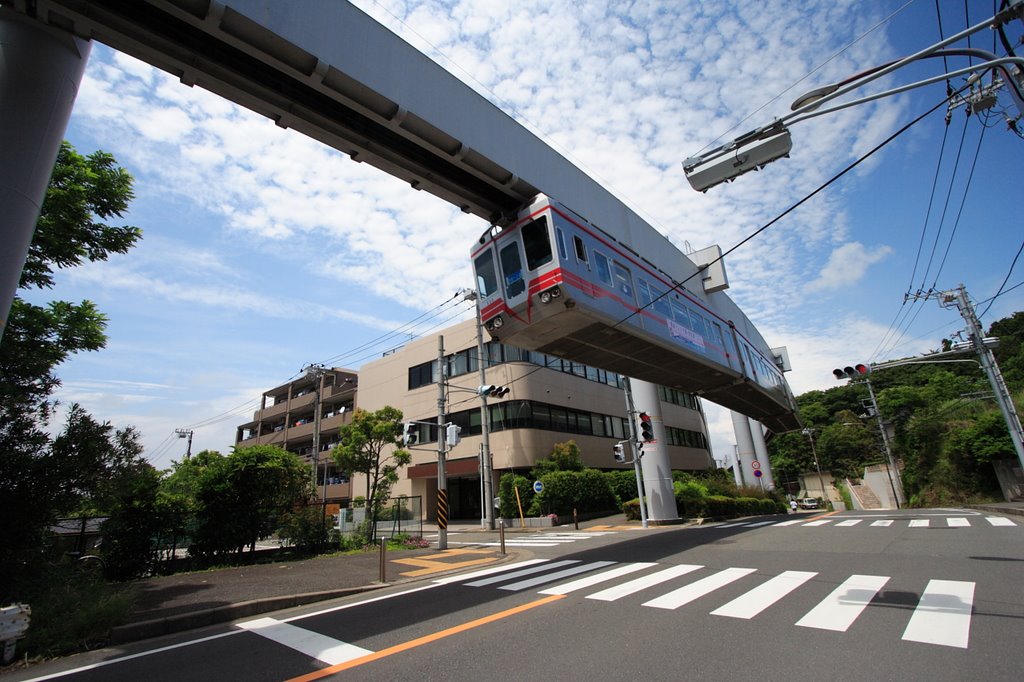

Maintenance Facilities
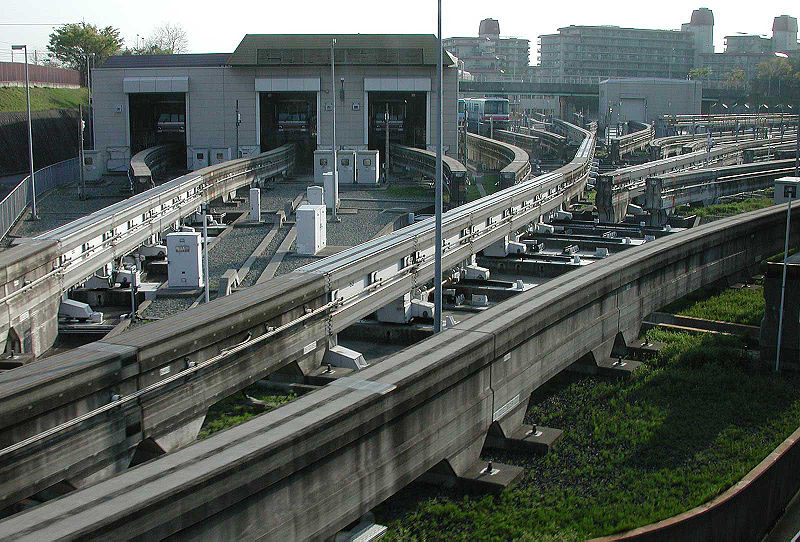
Safer than metro systems
Elevated transit systems are inherently safer than underground systems, especially if they are placed over major roads.
Access is easy via using regular emergency service equipment through the air over the road.
The flat-floor walk-through design is crucial as it allows evacuation from a single door. Fire extinguishers should be available in all carriages. Batteries should allow the train to be moved to the next station remotely if power is lost.
There is a 720mm gap between Hitachi ‘large’ trains on dual track allowing train-to-train evacuation with a ramp kept on each train.
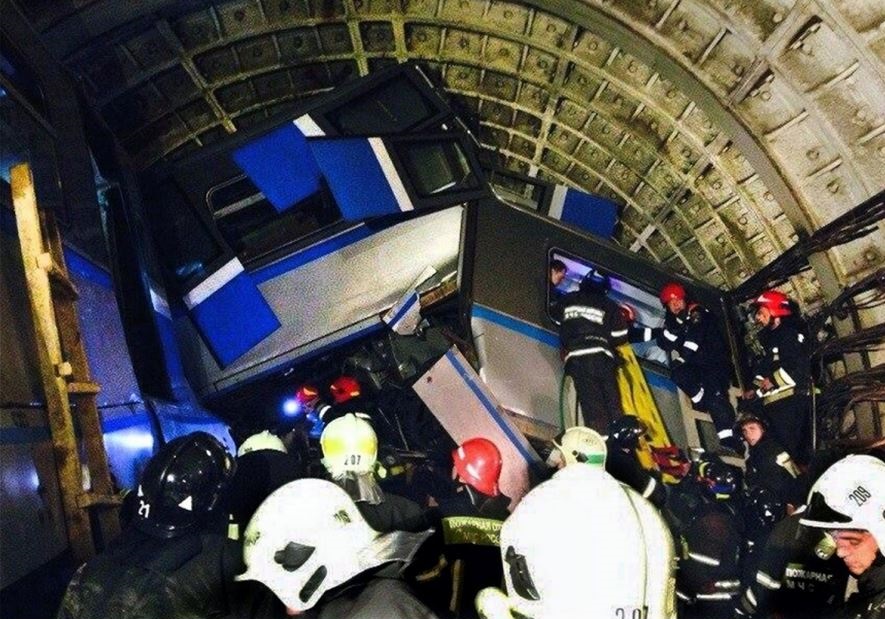
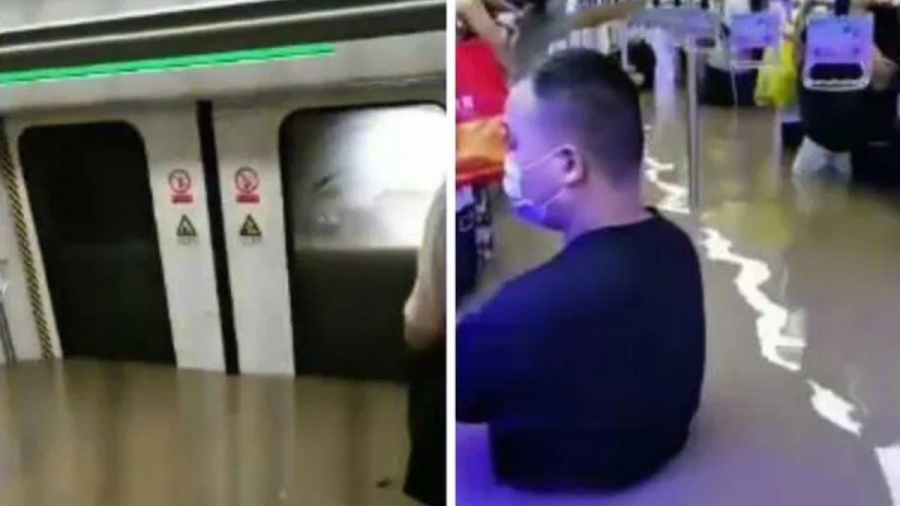
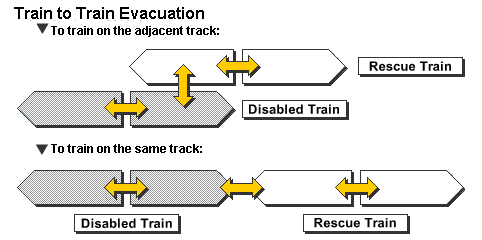
Adding a walkway
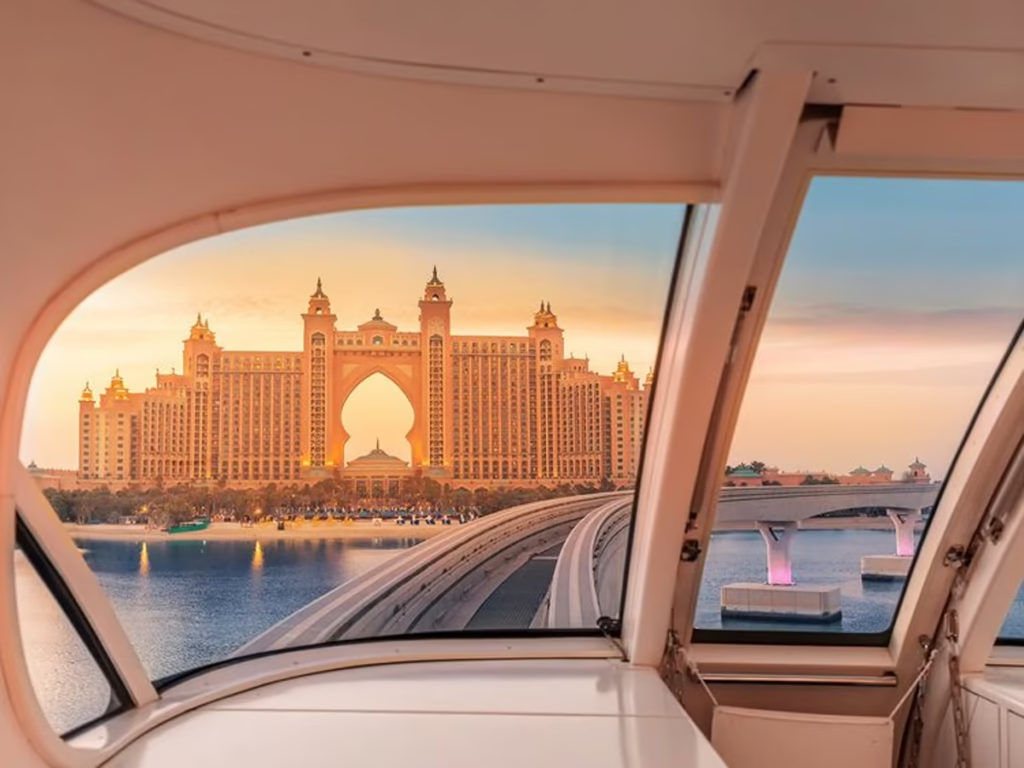
For the Hitachi Palm Monorail in Dubai a track emergency walkway was required for much of the track. This consists of metal grates suspended between the guideways on dual-track sections of the track.
This was not considered necessary in Japan, China or South Korea but is an option for Australia if required.
Moving passengers to the walkway may not assist with evacuation to the ground and may obstruct evacuation to a rescue train.
Arguably there is no case for a walkway If trains can move to the next station using batteries and evacuation to the ground from the train is reasonably feasible.